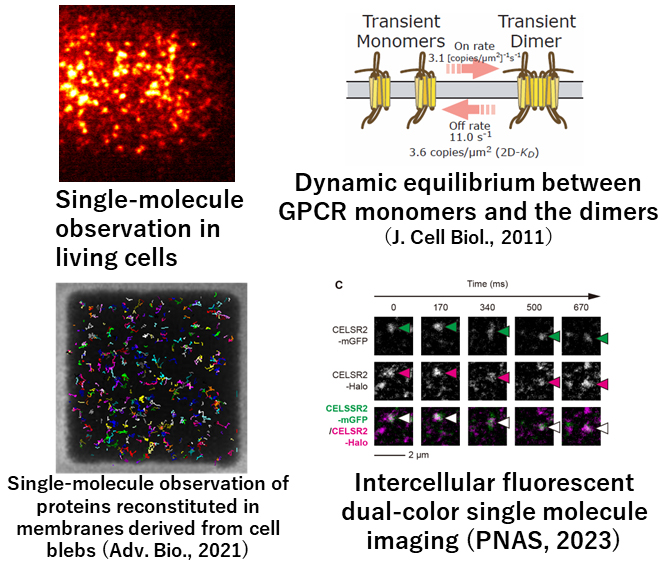Home > Cancer and signal transduction mechanisms of G-protein coupled receptor revealed by single-molecule imaging
Cancer and signal transduction mechanisms of G-protein coupled receptor revealed by single-molecule imaging
G-protein coupled receptor (GPCR) constitutes the largest receptor family. Since they are known to be related not only to various signal transduction pathways that maintain homeostasis or sensory organs but also to cancer, a comprehensive understanding of their signaling transduction mechanisms is required for the treatment and elucidation of diseases. Although it has been suggested that the dimer- or oligomer-formation of GPCR is crucial for regulating its function, the details are totally unknown. Therefore, by applying our advanced single-fluorescence microscopy technique, we have found that GPCR certainly forms transient dimers in the plasma membrane with a lifetime of around 100 milliseconds, which is tightly related to the receptor activity (see Figure).

Recently, several new concepts have been proposed to organize membrane proteins; liquid-liquid phase separation mediated by the protein-protein interaction, and the membrane raft consisting of saturated lipid molecules and lipid-anchored proteins. These mechanisms are important to organize GPCR cooperatively, however, the details are poorly understood. In this research, we will elucidate the mechanisms of how the liquid-liquid phase separation or lipid raft is regulated by using advanced single-fluorescence microscopy techniques, leading to the elucidation of signal transduction mechanisms of GPCR.

